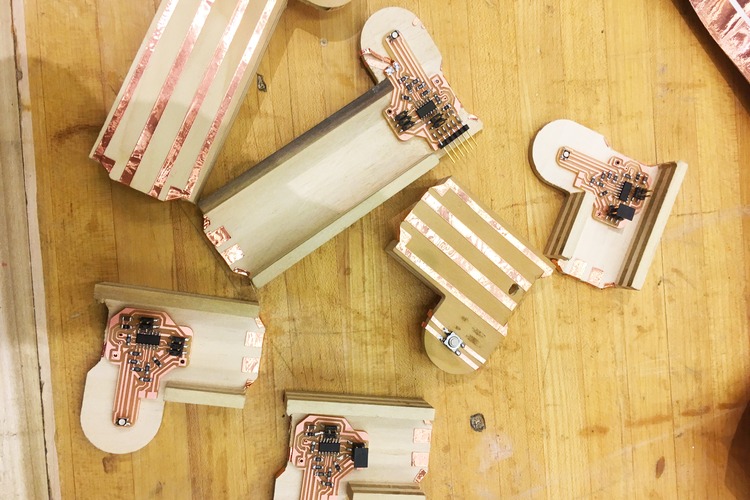Grad Life: How to Make Almost Anything Better
-
-
Slice of MIT
Filed Under
Recommended

Emily Salvador '16 is a first year master's student at the Media Lab.
How to Make (almost) Anything is a community as much as it is a class. From the title of the course, I knew that I’d be stretching my brain and limits as I attempted to master a variety of fabrication skills. However, I never imagined that the best lessons and ideas I’d get in the class would be learned through my peers.
A little background…How to Make (almost) Anything—taught by Neil Gershenfeld, the director of the Center for Bits and Atoms—is an institution 20 years in the making. Started in 1998, the course was designed to expose technical students to advanced fabrication equipment and techniques, but it ultimately grew into something much more rewarding. In its current iteration, students marry creative visions with technical implementation in empowering and novel ways ultimately to create a final project that combines all the skills acquired during the semester.
Students’ previous experience, learning goals, and personal interests had profound impacts on final projects. Some students built robots while others built interactive music systems while others still built contraptions that didn’t fit into any category.
I came up with TRAX (pronounced tracks), a toy aimed at teaching the fundamentals of music composition in an intuitive, physical way. Similar in appearance to wooden train tracks, I designed tracks of different lengths corresponding to rhythmic values (for example, the longest piece represented a half note, while a track half that length represented a quarter note). Each track had an LED light to indicate note value (for example, if the track LED was red, it would play the note "C").

Musical train track assembly in the shop.
Through the marathon of final presentations, what stood out most was how each project reflected their maker’s interest and personality. These final projects showcased the power of making and self-expression in imaginative ways.
And, as a community, we made our projects better. There was a moment during the final push to finish the projects when I nearly gave up. I had been debugging infrared LEDs and phototransistors for HOURS in the middle of the night. I still couldn’t figure out why the serial monitor kept spitting the same value back at me, no matter how close the LED and phototransistor were. To understand how frustrating this is, you should know that phototransistors are basically tiny cameras that detect defined wavelengths of light and return a value between 0 and 1024 depending on how much light it sees. I figured I must’ve blown up the LEDs, but I had no way to visually inspect because infrared is outside human’s visual spectrum, and I was way too mentally drained to try to wrestle with a voltmeter.
I ran down to the shop to grab new LEDs and one of my classmates, Agnes, stopped me, probably sensing my frantic vibe. I told her my predicament, and then she asked me why I needed to use infrared light. Turns out, she was using similar components to me (LEDs and phototransistors), but in the visible spectrum to coax a swarm of robots to chase or hide from her phone’s flashlight. She’s brilliant. Anyway, I switched out all my components, and voila, it worked! Plus, now I had a fun, new way to interact with my musical train tracks, through my phone’s flashlight, as my new phototransistors would be able to detect white light.
I can point to so many fortuitous exchanges of wisdom over the course of the semester—fleeting moments that challenged my work and ultimately allowed me to create something better than I could on my own. And, for that, I am so grateful. I learned the skills to make almost anything, but more importantly, I found that the most rewarding tool is a community to support and inspire each member.
Grad Life blog posts offer insights from current MIT graduate students on Slice of MIT.








